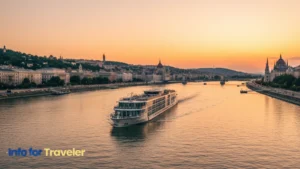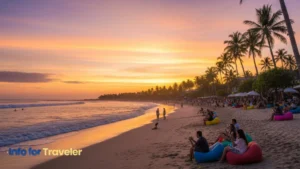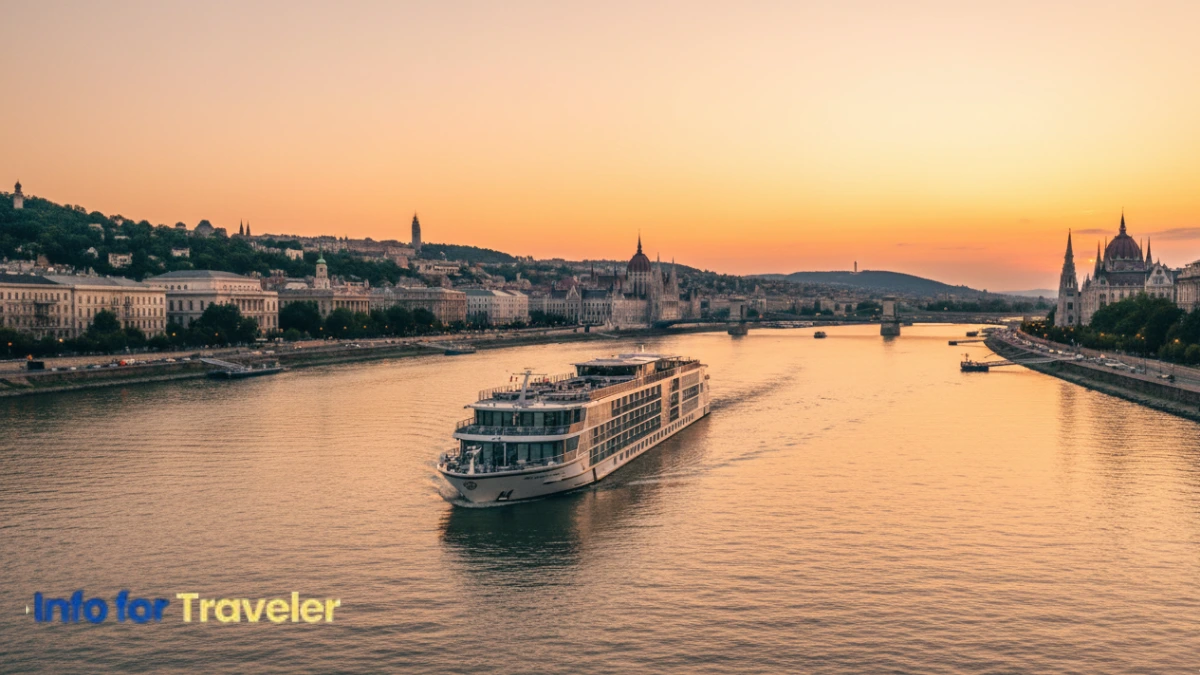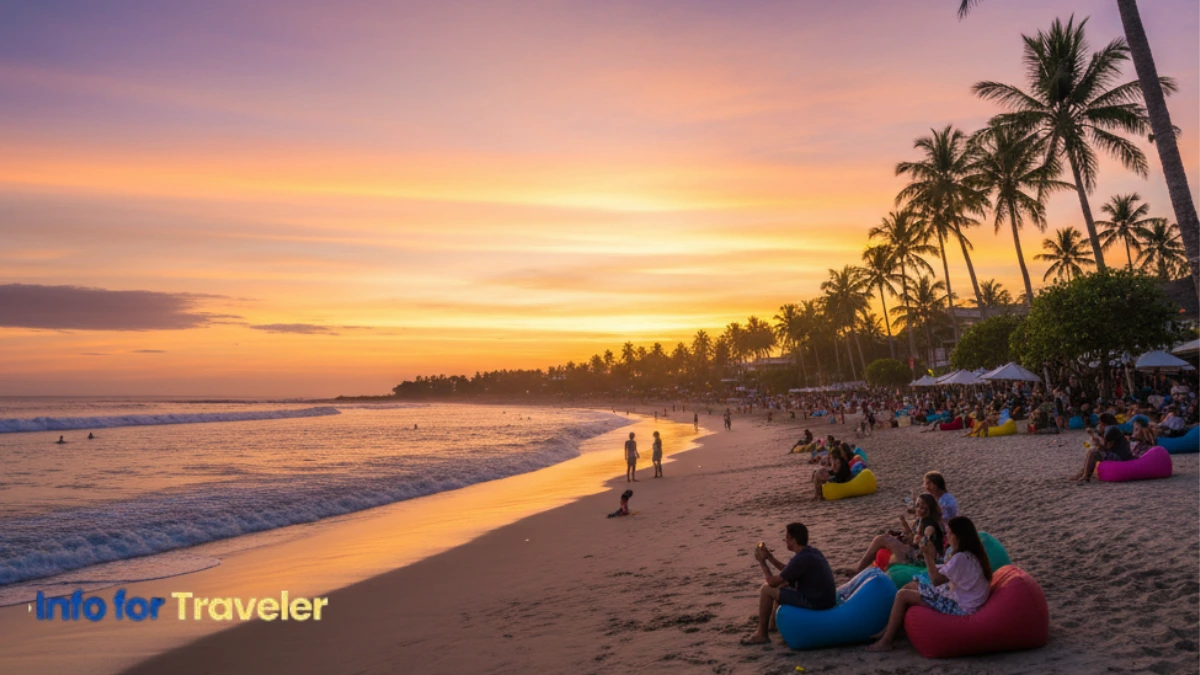Planning a Japan two week itinerary can be super exciting, but also a little confusing. With so many amazing places to see, from high-tech cities to old temples, it’s hard to know where to begin. This 2 week Japan itinerary makes it easy to enjoy the best of Japan without feeling stressed.
You’ll visit famous cities like Tokyo, Kyoto, and Hiroshima, and take fun day trips to places like Mount Fuji, Hakone, Nikko, and Kamakura. Along the way, you’ll see top sights like Shibuya Crossing, Fushimi Inari Shrine, and the calm, beautiful island of Miyajima.
This guide will also show you how to use Japan’s public transport, including Suica cards, the Shinkansen (bullet train), and helpful tools like the best Japan travel apps. Whether you’re going to Japan for the first time or you’ve been before, you’ll find tips on everything, from cool landmarks and Japanese street food in Osaka, to strange but important laws for tourists.
You’ll also learn how to use the Japan Rail Pass, stay connected with WiFi, pack smart, and find the best places to eat, sleep, and explore. Ready to start your trip? Let’s dive into your first stop, Tokyo!
How Your Two Weeks Will Look Like in Japan
If you’re planning a Japan two week itinerary, you might wonder what your trip will look like each day. Don’t worry, this simple plan shows you how to enjoy Japan’s top cities, relaxing nature spots, and fun local places without getting confused.
Let’s take a quick look at how your 2 week Japan itinerary could go!
Week One: Big City Fun, Mountains, and Peaceful Towns
Your trip starts in Tokyo, the capital city of Japan. Spend 2 to 3 days here. You’ll visit busy places like Shibuya Crossing and peaceful ones like Meiji Shrine Tokyo. Walk around old streets near Sensoji Temple Asakusa, shop in Akihabara Electric Town, and see the city from the top of Tokyo Tower view. Get around easily using a Suica card or Pasmo card Tokyo.
On day four, take a Mount Fuji day trip. You can enjoy amazing views and visit Hakone, a mountain town with hot springs. Try the black eggs Owakudani and ride a cable car for more great views. You can also relax in a real Japanese onsen Hakone.
Next, visit Nikko on day five. This town has old temples, waterfalls, and quiet forests. Or, go to Kamakura instead to see the Great Buddha and walk by the sea.
For day six and seven, head to the countryside. Visit Nagano to see the snow monkeys in hot springs, or go to Takayama, a peaceful town in the mountains. If you want something special, stop at Shirakawa-go, where you can see old farmhouses with triangle-shaped roofs. These places show you a very different side of Japan.
By the end of the week, you will have seen a mix of busy cities, nature, and calm villages.
Week Two: Temples, Food, and History
In the second week, take the fast train (Shinkansen Tokyo to Kyoto) to start the next part of your trip. Use your Japan Rail Pass to make traveling cheaper and easier.
Spend 3 days in Kyoto, the heart of traditional Japan. Visit Fushimi Inari Shrine with its red gates, walk through the green Arashiyama Bamboo Grove, and enjoy the view at Kiyomizudera Temple. In the Gion Geisha district, you might even see women dressed in traditional kimonos. For fun photos, try a Kyoto kimono rental yourself!
Then, take a short train ride for an Osaka day trip from Kyoto. Osaka is great for food lovers! Try Japanese street food Osaka like takoyaki and okonomiyaki. Visit Osaka Castle and enjoy the bright lights and fun of Dotonbori nightlife.
Next, head to Hiroshima. Learn about history at the Peace Memorial Park and take a boat to Miyajima Island, where you’ll see a big red gate floating in the water. It’s peaceful and beautiful.
If you have an extra day, visit a new city like Fukuoka or Okayama. These places have fewer tourists but great food and friendly people.
On the last day, return to Tokyo or Osaka, depending on where your flight is. Use the time to shop, rest, or enjoy one last meal in Japan.
Week 1 in Japan – Cities, Culture & Scenic Escapes
Your first week in Japan is the perfect mix of city excitement, peaceful mountain towns, and scenic cultural spots. It starts with a few days in Tokyo, then moves outward with fun day trips and unique regions that many travelers overlook. This part of your Japan two week itinerary helps you understand both modern and traditional Japan in just a few days.
Get ready to explore busy streets, peaceful shrines, hot springs, mountain villages, and much more!
Tokyo – First 2 days

- Best for: First-timers, city lovers, anime fans
- Suggestion: Get a Suica card or Pasmo card Tokyo to travel easily
- Highlight: A mix of neon lights, temples, parks, and food streets
Tokyo is one of the most exciting cities in the world. It’s loud, colorful, and full of energy, but also has quiet shrines, peaceful parks, and cultural spots to explore. You’ll see shiny skyscrapers next to old temples, and modern fashion next to traditional dress. It’s the perfect place to start your Japan two week itinerary.
In just a few days, you can enjoy famous places like Shibuya Crossing, taste street food, and relax under cherry blossom trees in Ueno Park. Whether you love tech, shopping, or history, Tokyo travel guide spots offer something for everyone. Public transport is fast and safe, and using a Suica card makes things easy.
Let’s look at the best places to explore during your time in Tokyo:
Shibuya, Asakusa & Akihabara
(City vibes and cultural fun)
Shibuya Crossing is one of the busiest street crossings in the world. When the light turns green, hundreds of people walk in every direction at once! It’s exciting to see, and even more fun to be a part of. There are lots of shops and cafes nearby too.
In Asakusa, visit the beautiful Sensoji Temple, Tokyo’s oldest temple. The street leading to the temple is full of tiny shops selling snacks, souvenirs, and crafts. It’s a great place to try Japanese sweets or buy local gifts.
Akihabara Electric Town is a dream spot for fans of anime, manga, and video games. You’ll find themed cafés, game arcades, and electronics stores with the latest gadgets. Even if you’re not into games, it’s fun to walk around and feel the energy.
Meiji Shrine & Ueno Park
(Nature and tradition in the city)
Hidden inside a quiet forest near Harajuku, the Meiji Shrine Tokyo is peaceful and beautiful. It’s a Shinto shrine where people come to pray, write wishes on wooden plaques, or just take a slow walk through the giant torii gates. You may even see a traditional wedding ceremony happening!
Next, head to Ueno Park, one of the most relaxing green spaces in the city. In spring, it’s famous for Ueno Park cherry blossoms, and families love to come here for picnics. There’s also a zoo, museums, and a big pond where you can rent small boats.
Tokyo Tower & Imperial Palace
(History meets skyline views)
If you want to see Tokyo from above, go to the top of Toyo Tower view, which looks like a red and white version of the Eiffel Tower. On clear days, you can even spot Mount Fuji in the distance.
Then take a walk around the Tokyo Imperial Palace tour area. You can’t go inside the palace itself, but you can enjoy the lovely gardens, bridges, and big open spaces. It’s calm and full of history, right in the middle of the city.
Hakone – Day 3

- Best for: Nature lovers, hot spring baths, Mount Fuji views
- Suggestion: Use a Hakone Free Pass for cheaper travel
- Highlight: Peaceful mountain town with unique attractions
Hakone is my favorite escape from Tokyo. It’s surrounded by green hills, calm lakes, and natural hot springs known as Japanese onsen Hakone. You’ll find peaceful streets, art museums, ropeways over volcanoes, and tasty local food. It’s perfect for resting and enjoying fresh air.
The area is also great for viewing Mount Fuji, especially on clear days. Travel is easy with a Hakone Free Pass, which lets you ride trains, cable cars, and boats with one ticket.
Owakudani & Black Eggs
Ride the Hakone Ropeway to the volcanic valley of Owakudani, where steam rises from the earth. This place was formed by an eruption over 3,000 years ago! Be sure to try the famous black eggs of Owakudani, cooked in the hot sulfur water, locals say they bring long life.
Lake Ashi & Pirate Cruise
Enjoy a ride on Lake Ashi in a pirate-themed boat. The lake is calm and surrounded by forests, with a perfect view of Mount Fuji when the sky is clear. Some cruises stop near shrines, like the red torii gate of Hakone Shrine, which sits on the water.
Mount Fuji – Day 4

- Best for: Bucket-list photos, mountain views, peaceful towns
- Suggestion: Stay overnight in Kawaguchiko for sunrise views
- Highlight: Best place to see and enjoy Japan’s tallest mountain
Mount Fuji is Japan’s tallest and most famous mountain. Even if you don’t climb it, visiting the nearby towns lets you enjoy amazing views and peaceful surroundings. The Fuji Five Lakes area is full of small villages, museums, and nature trails.
You can take a day trip from Tokyo or stay in Kawaguchiko, a relaxing lake town that sits right below the mountain. It’s a must-visit spot in your Japan two week itinerary.
Fuji Five Lakes & Chureito Pagoda
Explore the Fuji Five Lakes, especially Lake Kawaguchi, which offers the best views. Nearby is Chureito Pagoda, a red five-story tower on a hill. From here, you can take one of the most famous photos in Japan, Mount Fuji, cherry blossoms, and the pagoda all in one shot.
Kawaguchiko Town & Museums
Kawaguchiko is a quiet town that’s easy to reach by train or bus. Walk along the lake, visit small museums like the Music Forest Museum, and try dishes made from local ingredients. Many guesthouses offer rooms with views of Mount Fuji.
Nikko – Day 5

- Best for: Nature walks, historical shrines, relaxing air
- Suggestion: Use Nikko Pass for round-trip travel from Tokyo
- Highlight: A quiet town full of temples and forests
Nikko is a peaceful town north of Tokyo, known for its beautiful shrines and lush forests. The air feels clean and cool, and the trees seem to whisper as you walk. It’s a great place to enjoy nature and learn about Japan’s spiritual history.
The main shrines are close together, so it’s easy to see a lot in one day. This trip adds depth to your 2 week Japan itinerary by showing Japan’s spiritual side.
Toshogu Shrine & Temple Grounds
Toshogu Shrine is Nikko’s top attraction. It’s bright, gold, and full of carvings of animals and flowers. It was built to honor Tokugawa Ieyasu, one of Japan’s most powerful leaders. Walk around and you’ll see huge gates, quiet paths, and hundreds of stone lanterns.
Kegon Falls & Lake Chuzenji
Take a bus up to Kegon Falls, one of Japan’s tallest waterfalls. It’s strong and loud in summer, and frozen into ice pillars in winter. Nearby is Lake Chuzenji, a calm mountain lake that’s great for relaxing or having lunch with a view.
Kamakura – Day 6

- Best for: Seaside views, old temples, easy walking trails
- Suggestion: Great as a light and peaceful day trip
- Highlight: A calm town with a giant Buddha and ocean breeze
Kamakura is a small town by the sea, filled with temples and leafy hiking paths. It was once Japan’s capital, so it’s full of old buildings and stories. You can visit it in a day and feel both relaxed and inspired.
It’s one of the best day trips from Tokyo, offering a nice break from the crowds.
Great Buddha & Hase-dera Temple
See the Great Buddha of Kamakura, a giant bronze statue that has sat outdoors for over 750 years. It’s quiet, simple, and powerful. Just a short walk away is Hase-dera Temple, built on a hillside with lovely gardens and sea views from its balcony.
Daibutsu Hiking Trail
If you like nature, try the Daibutsu Hiking Trail. It’s a short and easy path through the woods, connecting temples and offering quiet views. You’ll hear birds, pass bamboo groves, and enjoy the green side of Kamakura.
Takayama – Day 7

- Best for: History, crafts, small-town charm
- Suggestion: Try staying in a local ryokan with tatami floors
- Highlight: A slow-paced town with real Japanese feel
Takayama is a small town in the Japanese Alps, full of wooden houses and friendly people. It feels like a step back in time. The mornings are quiet, the air is fresh, and the shops sell local crafts and treats.
It’s a great stop if you want to slow down and enjoy Japan’s peaceful countryside before heading west.
Sanmachi Old Town & Markets
Walk through Sanmachi, Takayama’s preserved old town area. The streets are lined with Edo-era wooden houses, and many shops offer snacks, crafts, or sake tastings. Don’t miss the morning markets along the river, great for souvenirs and meeting locals.
Hida Folk Village
Just outside town, visit Hida Folk Village, a museum with traditional farmhouses. You’ll learn how mountain people lived long ago, and see big thatched-roof homes with fireplaces and tools.
Checklist and Summarized Schedule for Week 1
To help you stay organized during your first week in Japan, here’s a simple day-by-day breakdown of where to go, what to do, what to carry, and where to stay. This chart keeps things clear, so you can enjoy your trip without any confusion.
| Day | Place | What You’ll Do | Take With You | Where to Stay |
| 1 | Tokyo | Arrive, visit Shibuya Crossing, Meiji Shrine, walk around Harajuku | Suica card, phone with maps, comfy shoes | Hotel in Shibuya or Shinjuku |
| 2 | Tokyo | See Sensoji Temple, explore Asakusa, shop in Akihabara, relax in Ueno Park, finish with Tokyo Tower | Camera, small cash, WiFi device | Same Tokyo hotel |
| 3 | Hakone | Ride ropeway, visit Owakudani, try black eggs, boat cruise on Lake Ashi, visit Hakone Shrine, enjoy a hot spring | Hakone Free Pass, light jacket, towel | Traditional ryokan in Hakone |
| 4 | Mount Fuji | Go to Kawaguchiko, see Chureito Pagoda, walk around Lake Kawaguchi, visit a Fuji museum or take ropeway | JR Pass, camera, snacks, weather-ready clothes | Hotel with Fuji view in Kawaguchiko |
| 5 | Nikko | Visit Toshogu Shrine, walk forest paths, see Kegon Falls and Lake Chuzenji, return by evening | Nikko Pass, walking shoes, water bottle | Back to Tokyo hotel |
| 6 | Kamakura | See Great Buddha, explore Hase-dera Temple, walk the Daibutsu Trail, enjoy beachside lunch | Day bag, light clothes, small change | Return to Tokyo or stay in Kamakura |
| 7 | Takayama | Take train, explore Old Town, visit morning market, stop by Hida Folk Village, try Hida beef | JR Pass, warm jacket, snacks | Guesthouse in Takayama |
This plan balances big cities, nature escapes, cultural sights, and quiet towns, giving you a real taste of Japan’s diversity in just one week. With everything mapped out, you can explore stress-free and focus on making amazing memories.
Week 2 in Japan – Temples, Street Food & Stories of the Past
After the fresh air and nature of Week 1, Week 2 dives into the heart of Japanese tradition, flavor, and emotion. From the spiritual calm of Kyoto, the buzzing food alleys of Osaka, to the quiet remembrance of Hiroshima, this week gives you deep cultural experiences and exciting memories.
Expect beautiful shrines, glowing city nights, peaceful gardens, and the flavors of Japanese street food in Osaka. Let’s start in Kyoto, the soul of Japan.
Kyoto – First 2 days

- Best for: Culture, temples, geisha, and seasonal beauty
- Suggestion: Book a Kyoto kimono rental for traditional photos
- Highlight: Peaceful walks through shrines and bamboo forests
Kyoto was once the capital of Japan and remains its cultural heart. It’s filled with more than 1,600 temples, beautiful gardens, and wooden tea houses. Time moves slower here. You’ll hear the quiet sound of bamboo swaying and see locals wearing kimonos on stone paths.
With every temple and old street, Kyoto offers history, calm, and beauty. It’s a place where you can experience Japanese cultural traditions up close.
Fushimi Inari Shrine – Thousands of Red Gates
One of Japan’s most iconic sights, Fushimi Inari Shrine, has thousands of bright red torii gates stretching along a mountain trail. Each gate is donated by a local person or business. The walk starts busy near the base, but it becomes peaceful as you climb higher. This shrine honors the god of rice and business.
Local tip: Go early in the morning or late in the evening for fewer crowds and a more magical feeling under the lantern-lit paths.
Arashiyama Bamboo Grove – Kyoto’s Natural Escape
In western Kyoto, you’ll find the Arashiyama Bamboo Grove, a surreal path surrounded by tall, green bamboo. The light filters through the stalks, making everything glow. It feels like stepping into another world.
Nearby, you can visit Tenryu-ji Temple, a Zen Buddhist site with a peaceful garden and mountain views. Cross the famous Togetsukyo Bridge, and take a boat ride down the Hozugawa River.
Kiyomizudera Temple – Kyoto’s Cliff Temple
Kiyomizudera is a large wooden temple built into the hillside, with a giant balcony overlooking the city. It offers stunning views, especially in spring and autumn. The name means “Pure Water Temple,” and visitors drink from a spring below for good luck.
The streets around the temple are lined with souvenir shops and snack stalls selling mochi and yatsuhashi, Kyoto’s famous sweet.
Gion – Day 3

- Best for: Old Japan charm, tea houses, evening walks
- Suggestion: Take a walking tour to understand the history
- Highlight: Lantern-lit lanes and secret geisha sightings
Gion is Kyoto’s most famous geisha district. In the evening, the narrow stone streets glow with lantern light. The houses are wooden and quiet. You might see a geisha or maiko (apprentice geisha) quickly passing between tea houses.
This area shows Japan’s beauty at night, quiet, elegant, and deeply cultural.
🍵 Hanamikoji Street & Shirakawa Canal
Walk along Hanamikoji Street, where tea houses and kimono-clad women create a scene from old Japan. It’s one of the best places to learn about geisha culture. Along the nearby Shirakawa Canal, cherry trees hang over the water, creating one of Kyoto’s most peaceful scenes.
Osaka – Day 4 to 5

- Best for: Street food, nightlife, and modern Japan
- Suggestion: Visit in the evening when streets come alive
- Highlight: Try takoyaki, okonomiyaki, and local snacks
Osaka is Japan’s food capital. It’s known for its bold flavors, bright signs, and friendly locals. The vibe here is fun and energetic, especially at night. After peaceful Kyoto, Osaka gives your trip a jolt of modern energy and tasty street food.
While Kyoto whispers, Osaka shouts, and it’s a part of Japan you shouldn’t miss.
Dotonbori – Neon Nights & Food Heaven
Dotonbori is a colorful, busy area full of glowing signs and lively food stalls. Walk along the canal and take a photo in front of the Glico Running Man sign. Try local favorites like takoyaki (fried octopus balls), okonomiyaki (Japanese savory pancake), and kushikatsu (fried skewers).
The food is affordable, fun to watch being cooked, and full of flavor. Don’t leave Osaka without trying it!
Osaka Castle – A Piece of History
Osaka Castle is a huge fortress with beautiful white walls and golden tigers. It played an important role in Japan’s samurai history. You can walk around the castle park, rent a boat in the moat, or go up the tower for city views.
Inside, there’s a museum showing the castle’s past, armor, and swords. It’s one of the top stops for anyone interested in Osaka’s history.
Hiroshima – Day 6 to 7

- Best for: History, reflection, and peaceful day trips
- Suggestion: Travel here by Shinkansen Tokyo to Kyoto to Hiroshima
- Highlight: Peace Memorial Park and floating shrines nearby
Hiroshima is a city that faced deep tragedy but now stands for peace. It’s calm, green, and powerful. Walking through the Peace Memorial Park, you’ll feel a deep respect for the city’s past and a hope for its future.
Hiroshima is also close to one of Japan’s most beautiful islands, Miyajima, home of the floating torii gate.
Peace Memorial Park & Museum
The Peace Memorial Park honors those who died in the atomic bombing in 1945. The A-Bomb Dome, left standing as a reminder, is now a UNESCO World Heritage Site. The museum shares stories from survivors and teaches visitors about the value of peace.
It’s emotional, moving, and important for any traveler to understand this part of Japan’s history.
Miyajima Island – Floating Shrine Beauty
Take a short ferry ride to Miyajima, known for its famous Itsukushima Shrine with a red torii gate that appears to float during high tide. The island is full of deer, quiet hiking paths, and maple-leaf shaped sweets called momiji manju.
Hike or take the ropeway up Mount Misen for sweeping views over the sea. It’s a peaceful end to your journey through western Japan.
Checklist and Summarized Schedule for Week 2
Your second week in Japan dives into the cultural heart of the country, full of temples, traditional streets, local food, and meaningful history. Use this chart as a clear guide to plan each day with ease.
| Day | Place | What You’ll Do | Take With You | Where to Stay |
| 8 | Kyoto | Arrive in Kyoto, explore Fushimi Inari Shrine, visit Arashiyama Bamboo Grove, walk Togetsukyo Bridge | JR Pass, camera, water bottle, comfy shoes | Hotel in Central Kyoto |
| 9 | Kyoto | Visit Kiyomizudera Temple, explore old streets like Ninenzaka, relax in Kyoto gardens | Suica/Pasmo card, sun protection, cash | Same Kyoto hotel |
| 10 | Gion | Walk along Hanamikoji Street, see geisha culture, enjoy tea houses, stroll near Shirakawa Canal | Phone for photos, light clothes, small change | Stay in Gion or Central Kyoto |
| 11 | Osaka | Travel to Osaka, explore Osaka Castle, shop in Shinsaibashi, relax before dinner | JR Pass or local pass, charger, cash | Hotel in Namba or Umeda |
| 12 | Osaka | Dive into Dotonbori nightlife, eat takoyaki & okonomiyaki, walk along the canal | Day bag, appetite, small bills for food stalls | Same Osaka hotel |
| 13 | Hiroshima | Take Shinkansen to Hiroshima, visit Peace Memorial Park & A-Bomb Dome, explore Hondori Street | JR Pass, tissues, respectful clothing | Hotel near Hiroshima Station |
| 14 | Miyajima (Day trip) | Ferry to Miyajima Island, see Itsukushima Shrine, hike or ride to Mount Misen, return by evening | Ferry pass, walking shoes, snacks, camera | Return to Hiroshima hotel or depart |
This second week offers deep cultural experiences, street food adventures, and quiet moments of reflection. With everything planned clearly, you’ll end your trip with a full heart, great memories, and a true understanding of Japan’s many layers.
Best Transport Option in Japan?
Japan is known for having one of the most advanced and reliable transport systems in the world. Whether you’re moving around a big city or traveling from Tokyo to Kyoto, getting around is safe, quick, and easy, if you know what to use.
This section explains the best ways to travel across Japan and within cities, using real, simple options that most tourists prefer.
1. Shinkansen (Bullet Train) – Fastest Way to Travel Between Cities
The Shinkansen, also called the bullet train, is the fastest and most comfortable way to travel between major cities like Tokyo, Kyoto, Osaka, and Hiroshima. It runs on time almost every single day and offers a smooth, quiet ride.
If you’re planning a 2 week Japan itinerary, the Shinkansen is a great way to move between destinations. For example, the train from Tokyo to Kyoto takes just over two hours. Seats are spacious, and most have charging outlets.
2. Japan Rail Pass – Save Money on Long Trips
The Japan Rail Pass (JR Pass) is a special ticket that gives you unlimited rides on most trains operated by JR (Japan Railways), including the Shinkansen on specific lines. It’s available for 7, 14, or 21 days and is perfect for people visiting more than two cities.
If your trip includes places like Tokyo, Kyoto, Osaka, and Hiroshima, then the JR Pass can save you a lot of money compared to buying each ticket separately. It can be purchased online before your trip or at airports and major stations in Japan.
3. Suica and Pasmo Cards – Best for City Travel
For short city trips in areas like Tokyo, Kyoto, and Osaka, travelers use Suica or Pasmo cards. These are rechargeable IC cards you tap at train gates instead of buying paper tickets each time.
They also work on buses, vending machines, and even convenience stores. You can load money at machines found in most train stations. These cards are easy to use and save time when riding subways and local trains.
4. Buses and Subways – Best for Local and Rural Travel
In large cities, subways are clean, fast, and easy to use. In rural areas and small towns like Hakone, Takayama, or Nikko, buses are often the best way to reach local attractions. Most stations have signs in English, and the routes are clearly shown.
Apps like Google Maps work well in Japan and can show exactly which bus or train to take, what time it comes, and how much it costs.
Pro Tips for Getting Around Japan
- Use the Shinkansen and JR Pass for fast travel between cities
- Use Suica or Pasmo cards for subways, buses, and daily transport
- Download reliable apps to help plan routes easily
- For remote areas, local buses or trains may be the only option
- Stay connected with WiFi or a local SIM to avoid getting lost
Once you understand these transport options, moving through Japan becomes simple and stress-free. With trains always on time and apps to guide you, getting from place to place will be one of the smoothest parts of your trip.
Best Japan Travel Apps
Plan Your Routes Without Confusion
When you’re traveling across Japan, having the right apps can make your journey much easier. From finding the best train route to reading signs and menus, these are the best Japan travel apps every visitor should install before their trip.
1. Google Maps – For All Transport Directions
Google Maps is one of the most reliable apps for Japan. It shows train, subway, bus, and walking routes in real time. You can also see station exits, schedules, platform numbers, and how long each trip will take. Whether you’re navigating Tokyo’s subways or planning a trip to Kyoto or Hiroshima, Google Maps keeps things clear and simple.
2. Japan Travel by Navitime – Built for Tourists
This app is designed especially for international visitors. It provides door-to-door routes, train transfers, offline maps, and even airport access guides. You can search by landmarks or train stations, and the app helps avoid routes not covered by your Japan Rail Pass. It’s especially helpful for people who don’t speak Japanese.
3. Japan Transit Planner – Quick Route Checker
This app focuses on speed and simplicity. Just type in where you are and where you want to go, and Japan Transit Planner gives you the best train route, total travel time, and ticket cost. It also shows whether the journey is covered by the JR Pass, making it a favorite for Shinkansen users.
4. Hyperdia – Best for JR Pass & Shinkansen Travelers
Hyperdia is perfect for people using the Shinkansen or long-distance JR lines. It gives exact train times, costs, platform numbers, and transfer info. You can also filter results to only show trains included in the Japan Rail Pass. This is one of the most trusted planning tools for fast and accurate rail travel.
5. Google Translate – For Signs, Menus & Conversations
While not a travel app in the traditional sense, Google Translate is essential in Japan. You can use your camera to translate signs, menus, and product labels, or type in words and phrases during conversations. It’s especially helpful in more rural places where English may not be spoken.
These five apps are trusted by tourists around the world. Together, they’ll help you navigate Japan’s public transport, understand local signs, and move from city to city with confidence.
Some Real Stories About 2 Week Japan Trips
It helps to hear from real people who’ve been to Japan. Their stories can show you what to expect, what to enjoy, and how to plan better. Below are two real examples of travelers who spent two weeks in Japan.
They visited famous cities like Tokyo, Kyoto, and Osaka, and used things like the Japan Rail Pass and Suica card to make their trip easy.
Case Study 1: Family Fun Across Japan
A smooth trip with kids
Traveler: Amy L. from Canada
Amy went to Japan with her sister and their kids. They stayed for two weeks and visited Tokyo, Hakone, Kyoto, and Osaka. A local travel expert helped them plan everything before the trip.
In Tokyo, the kids loved seeing the lights in Shibuya and the art at TeamLab Planets. Then they took a fast Shinkansen to Hakone. There, they saw volcano steam at Owakudani and rode the ropeway over the mountains.
Next, they spent time in Kyoto visiting famous temples and walking through the peaceful streets. Their last stop was Osaka, where they ate local food and explored Dotonbori, the fun night area with bright signs.
Amy said everything went smoothly. Even their train tickets were waiting for them at the hotel. Her kids had a great time, and she felt safe and relaxed during the whole trip.
Source: Shared on KimKim Travel Reviews
Case Study 2: Solo Travel Journey
One woman, one plan
Traveler: Katie from the USA
Katie traveled alone for two weeks in Japan. She planned the whole trip by herself and visited Tokyo, Hakone, Kyoto, Nara, and Kanazawa.
In Tokyo, she went to Shibuya Crossing and saw the historic Sensoji Temple. Then she traveled to Hakone, where she rode a boat on Lake Ashi and saw hot springs near Owakudani.
After that, she spent time in Kyoto, walking through the red gates at Fushimi Inari Shrine and the Arashiyama Bamboo Forest. In Nara, she saw the friendly deer in the park. Her last stop was Kanazawa, a quiet town known for its gardens and museums.
Katie said having a Japan Rail Pass helped her save money. She also used a Suica card for subways and downloaded a few Japan travel apps to help her find the best routes. She felt safe traveling alone and had no trouble getting around.
Source: Shared on Medium and Reddit Japan Travel Forum
These stories show two different ways to enjoy a 2 week Japan itinerary. One was a fun family trip. The other was a peaceful solo journey. Both travelers used trains, visited top places like Tokyo and Kyoto, and made memories that lasted a lifetime.
Final Thoughts on Your Japan Two Week Itinerary
Planning a Japan two week itinerary can feel like a big task, but with the right plan, it’s an unforgettable journey. In just 14 days, you can explore Japan’s top cities like Tokyo, Kyoto, Osaka, and Hiroshima, while also enjoying relaxing day trips to places like Mount Fuji, Hakone, and Nikko.
We’ve covered everything you need—from daily travel routes and how to use the Japan Rail Pass, to tips on using Suica cards, finding the best Japan travel apps, and staying connected with tools like Ninja WiFi. You’ve also seen real-life stories and expert suggestions to help you travel smart.
Whether you love temples, street food, shopping, or nature, this 2 week Japan itinerary gives you a great mix of culture, fun, and adventure. With good planning and the right tools, Japan is easy to enjoy—even on your very first visit.
Ready to explore Japan your way? Use this guide to make your trip smooth, smart, and full of amazing memories.
Wanna Explore more amazing Travel guides for the charming destinations over the World?
Go through the Blog of infofortraveler.com
You must check out this Fascinating guide about Romantic Getaways in Ohio: Perfect Spots for Couples
FAQs – Trending Queries
1. How much does a two‑week trip to Japan usually cost?
A typical two-week trip to Japan costs around $2,500–$4,000 per person, including flights, hotels, meals, rail passes, and sightseeing. Budget travelers may spend less by choosing simple accommodations and eating street food, while those staying in ryokans or dining out could spend more.
2. Is the Japan Rail Pass worth it for a 14‑day trip?
Yes, especially if you visit multiple cities like Tokyo, Kyoto, Osaka, and Hiroshima. The Japan Rail Pass saves you money on long-distance Shinkansen rides and includes many JR regional lines. Most travelers see real savings compared to buying individual tickets.
3. What are the best Japan travel apps I should use?
Top travel apps for Japan include Google Maps, Japan Transit Planner, Hyperdia, and Japan Travel by Navitime. These apps help you plan routes, check train times (including Shinkansen specifics), handle transfers, and see if a journey is covered by the Japan Rail Pass.
4. When’s the best time to visit Japan?
Popular times are spring (March–April) for cherry blossoms and autumn (October–November) for fall colors. The weather is mild and sightseeing areas like Fushimi Inari Shrine and Arashiyama Bamboo Grove are beautiful during these seasons.
5. Should I spend more days in Tokyo or split time across Japan?
Splitting your time gives you a richer trip. While Tokyo has vibrant neighborhoods like Shibuya and Akihabara, adding days in Kyoto, Osaka, Hakone, and Hiroshima gives you a wider view of Japan, from temples to hot springs to street food scenes.
6. Is Japan safe for solo travelers?
Absolutely. Japan is one of the safest travel destinations in the world. Solo visitors on Reddit and Quora report never feeling unsafe, even when returning late from nightlife in Dotonbori or taking late trains
7. Can I forward my luggage between hotels in Japan?
Yes. Many travelers use luggage forwarding services like Yamato Transport to send their bags to the next city. It costs around ¥1,000–¥2,000 per piece and lets you travel light on the trains, like the Shinkansen.
8. What are some unusual etiquette rules I should know?
In Japan, it’s polite to avoid eating while walking, speak quietly on trains, remove shoes indoors, and follow rules at onsen (hot springs), such as not entering with soap or towels. These customs help you blend in and show respect.
9. How should I pack for a two‑week trip to Japan?
Pack light. Bring layers, a waterproof jacket, a universal power adapter, comfy walking shoes, and a day pack for daily sightseeing. Many travelers keep sneakers and a small backpack for city walks and temple visits.










